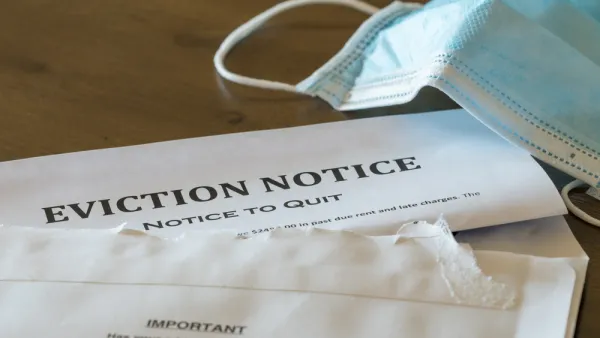The share of U.S. households facing rent debt is decreasing as the economy begins to recover from the pandemic, but rent debt is still concentrated by geography and demographics around the country.

A report by the National Equity Atlas and the Right to the City Alliance, "shows that 14% of all renting households are behind on payments, with the average amount owed being $3,400," reports Elliott Davis. The most recent data are for March, taken from from the U.S. Census Bureau's Household Pulse Survey and five-year 2019 American Community Survey, as well as the University of Southern California's Center for Economic and Social Research.
According to the data, Alabama, Louisiana, and Florida are the states with the highest proportion of households carrying rent debt. Hawaii has the highest rent debt per household. The report lacks data for Mississippi, North Dakota, South Dakota, West Virginia, and Wyoming due to insufficient data. The report also includes data for metropolitan areas.
Davis also notes the "extreme racial and socioeconomic disparities when it comes to who is behind on rent during the coronavirus pandemic." According to the report, "People of color make up 63% of the households that are in rent debt, and 78% are low-income households making less than $50,000, the data indicates."
As mentioned in articles covering the rent debt and eviction crisis in the early days of the pandemic, much of the economic stress of the pandemic has been absorbed by renters already struggling to pay the rent before the pandemic. "The National Equity Atlas' data shows that 46% of Black households, 45% of Latinx households and 42% of Native American households were "rent burdened and economically insecure" in 2019," explains Davis.
FULL STORY: Data Shows 5.7 Million U.S. Households Are Behind on Rent

National Parks Layoffs Will Cause Communities to Lose Billions
Thousands of essential park workers were laid off this week, just before the busy spring break season.

Retro-silient?: America’s First “Eco-burb,” The Woodlands Turns 50
A master-planned community north of Houston offers lessons on green infrastructure and resilient design, but falls short of its founder’s lofty affordability and walkability goals.

Delivering for America Plan Will Downgrade Mail Service in at Least 49.5 Percent of Zip Codes
Republican and Democrat lawmakers criticize the plan for its disproportionate negative impact on rural communities.

Test News Post 1
This is a summary

Test News Headline 46
Test for the image on the front page.

Balancing Bombs and Butterflies: How the National Guard Protects a Rare Species
The National Guard at Fort Indiantown Gap uses GIS technology and land management strategies to balance military training with conservation efforts, ensuring the survival of the rare eastern regal fritillary butterfly.
Urban Design for Planners 1: Software Tools
This six-course series explores essential urban design concepts using open source software and equips planners with the tools they need to participate fully in the urban design process.
Planning for Universal Design
Learn the tools for implementing Universal Design in planning regulations.
EMC Planning Group, Inc.
Planetizen
Planetizen
Mpact (formerly Rail~Volution)
Great Falls Development Authority, Inc.
HUDs Office of Policy Development and Research
NYU Wagner Graduate School of Public Service





























